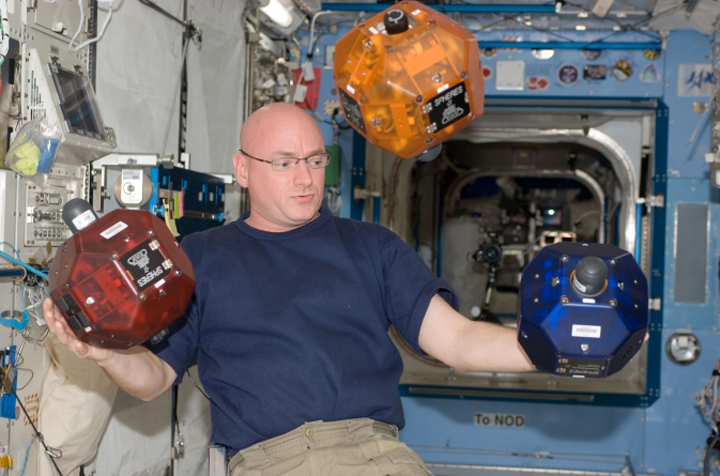TORONTO – Google’s Project Tango smartphones are out of this world – literally.

The Internet giant is sending smartphones equipped with 3D mapping capabilities to the International Space Station this week to enhance NASA’s on-board robots.
The smartphones will be attached to SPHERES, which stands for Synchronized Position Hold, Engage, Reorient, and Experimental Satellites. The flying robotic vehicles – inspired by the round floating robots that attack Luke Skywalker in Star Wars – were designed to help astronauts test control theory algorithms.
READ MORE: Astronaut sends first Vine from space
The volleyball-sized robots, which propel themselves around the ISS using CO2 thrusters, have been operating aboard the ISS since 2006.
By attaching Google’s development-stage smartphones to the SPHERES, the robots will be able to take pictures and video and help conduct inspections using its 3D sensors.
“Project Tango will allow SPHERES to leave the limited domain dictated by the metrology system which uses ultrasound and infrared light to communicate its position,” read the mission overview on NASA’s website.
“This will allow the satellite to explore the rest of the station and use new software algorithms to map the world around the SPHERES.”
According to NASA, the smartphones may help researchers build a more independent robotic system that would assist astronauts aboard the ISS.
READ MORE: Google unveils ‘Project Tango’ – 1st smartphone with 3D mapping ability
Project Tango, unveiled by Google in February, is still in its early stages. The technology allows the smartphones to learn the dimensions of rooms and spaces that the user moves around in.
The prototype phone has an integrated depth sensor, motion tracking camera, and computer vision processors that allow it to track motion in 3D in real time as the user – or in this case, the robot – holds it.
The phones will be sent to the ISS on July 11 on a cargo spacecraft.




Comments